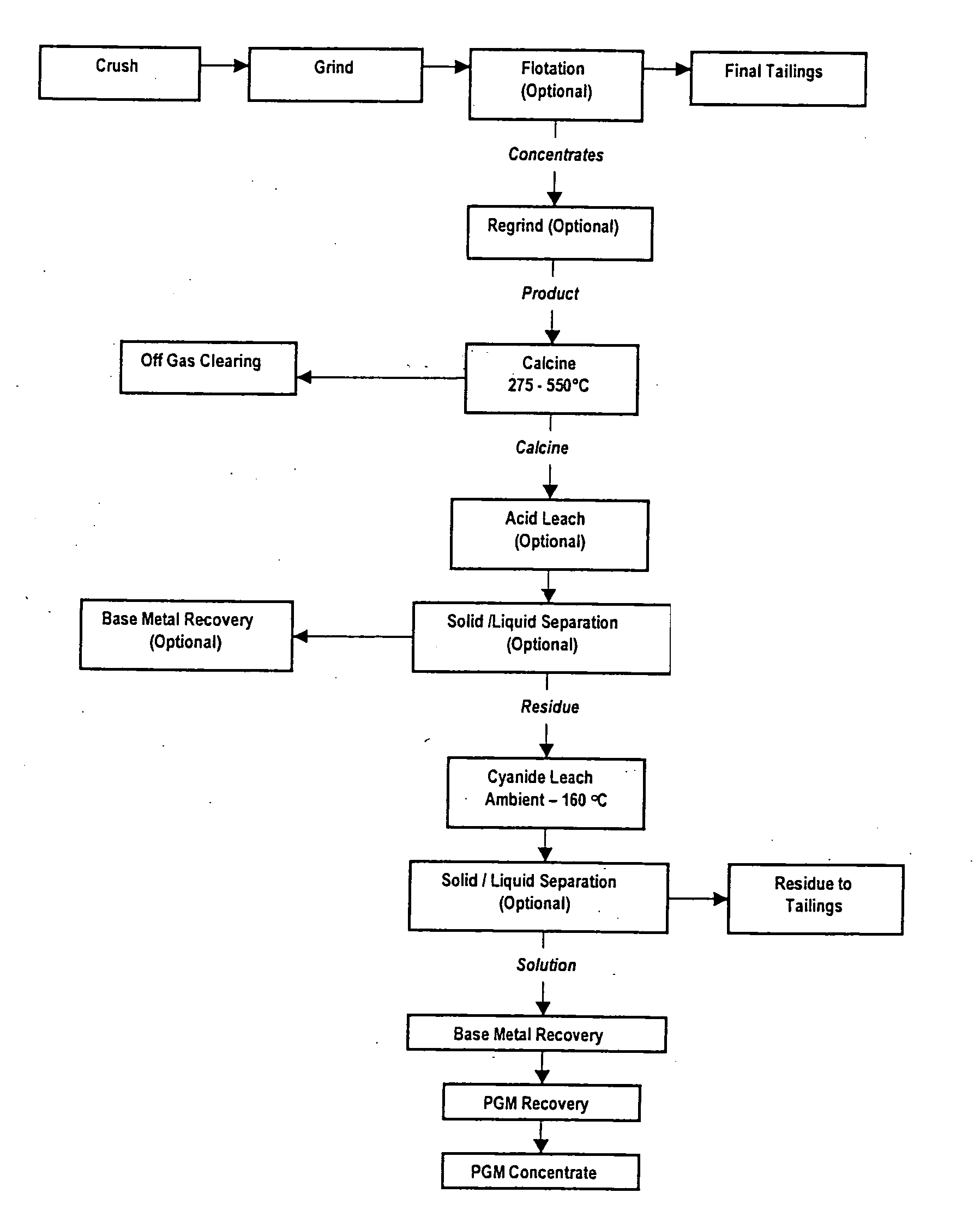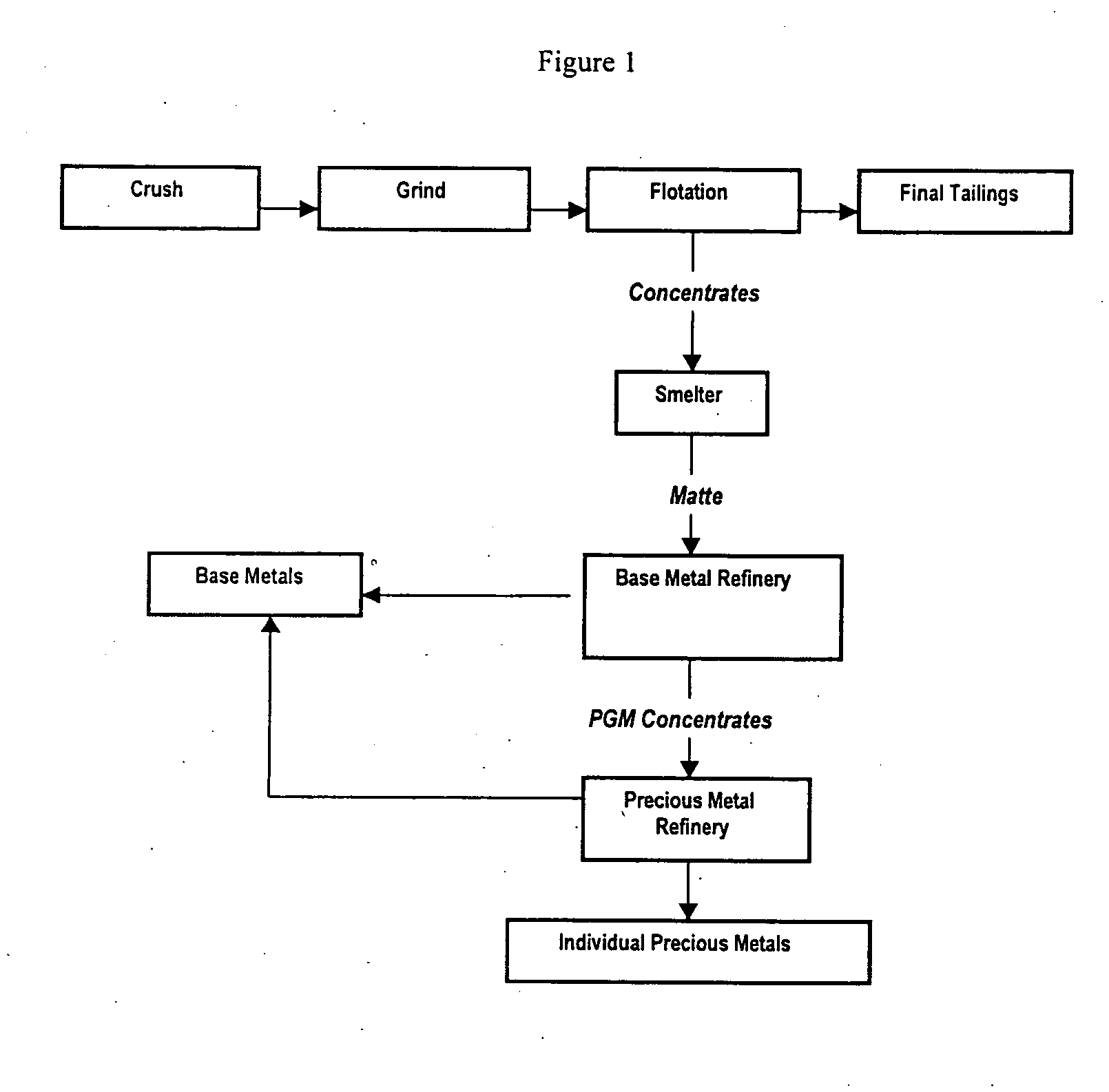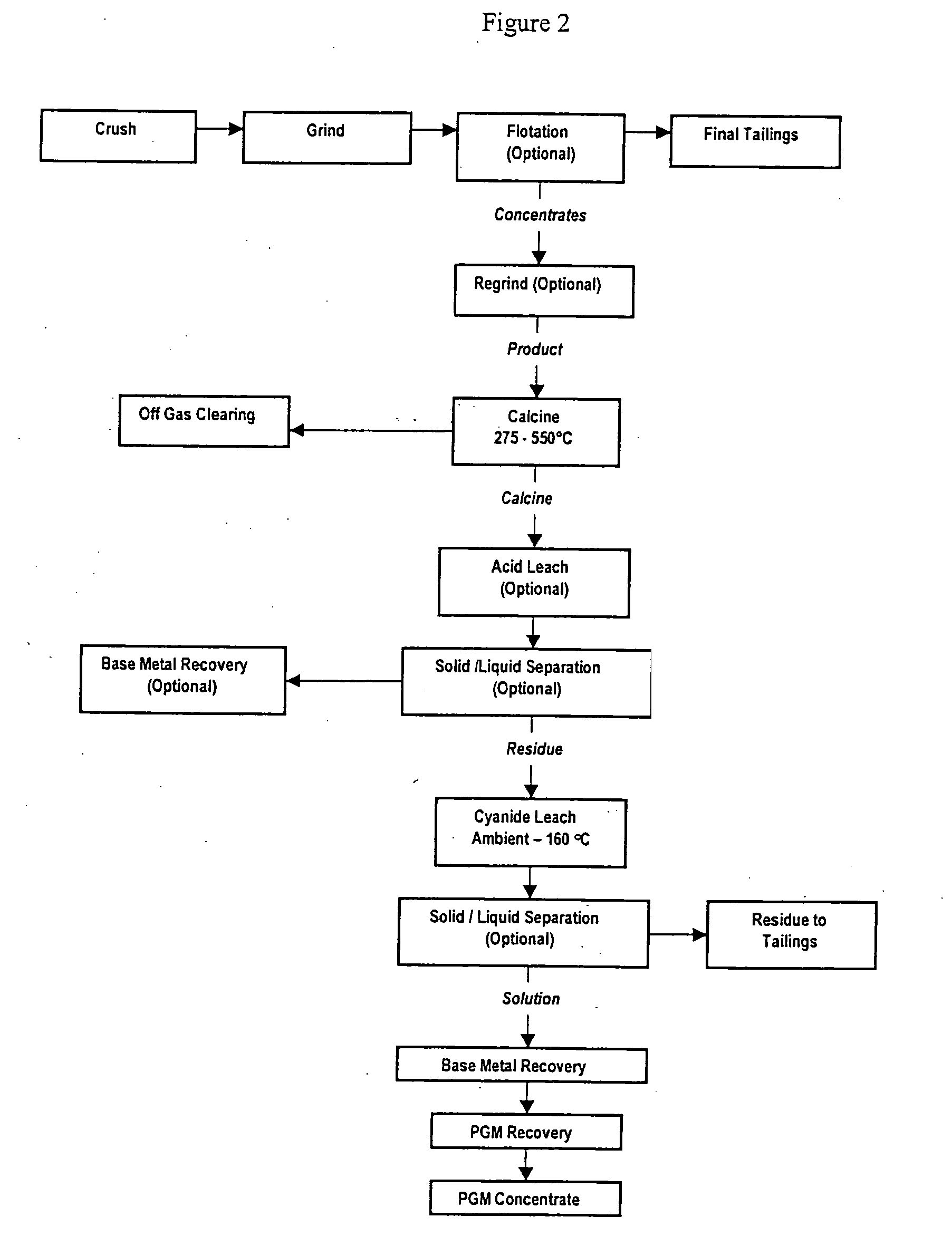Process for extracting platinum group metals
- Summary
- Abstract
- Description
- Claims
- Application Information
AI Technical Summary
Benefits of technology
Problems solved by technology
Method used
Image
Examples
example 1
Primary Ore Flotation Concentrate Calcine—Leach
[0077] In the first series of tests, primary ore flotation concentrate with a nominal P80 feed size of 53 μm was calcined at a series of temperatures, namely 330° C., 400° C., 450° C. and 500° C. for two hours. The calcined ore was then subjected to a cyanide leach at 60° C. for 48 hours at a pH of 9.5. The cyanide leach residue was reground to a P80 of 24 μm and subjected to a second cyanide leach under the same conditions. FIG. 3 shows the effect of calcine temperature on the recovery expressed as the weighted average of Pt plus Pd plus Au. As can be seen clearly from FIG. 3, the best results were obtained for calcining at 400° C. with Pt recovery of 72.7%, Pd recovery of 91.8% and Au recovery of 99% after 48 hours.
[0078] The total recovery of Pt, Pd, Au, Ni, Co and Cu are shown in Table 1 below.
TABLE 1Element330° C.400° C.450° C.500° C.Pt39.072.760.914.0Pd89.591.892.182.2Au75.399.099.598.8Ni54.943.837.236.0Cu29.766.145.651.3Co20....
example 2
[0079] Primary ore flotation concentrate with a P80 size of 53 μm was calcined at a temperature of 400° C. for two hours and the effect of a subsequent regrind prior to cyanide leaching was assessed. Tests were conducted without regrind, with a regrind P80 size of 33.5 μm and a third test with a P80 regrind size of 12.8 μm. Subsequent cyanide leaching was conducted at 60° C. for up to 48 hours at a pH of 9.5 and the results are presented below in Table 2. FIG. 4 illustrates the percentage metal extraction of Au, Pt and Pd as a function of time with no regrind. FIG. 5 illustrates the percentage metal extraction of Au, Pt and Pd as a function of time with a regrind P80 of 33.5 μm. FIG. 6 illustrates the percentage metal extraction of Au, Pt and Pd as a function of time with a regrind P80 of 12.8 μm.
TABLE 2ElementNo RegrindRegrind P80 33.5 μmRegrind P80 12.8 μmPt64.184.381.4Pd86.692.995.3Au97.399.299.4Ni47.550.664.9Cu77.079.981.4Co22.832.849.7
[0080] These figures illustrate that the ...
example 3
Oxidised Ore Flotation Concentrate Calcine—Leach
[0081] Tests were conducted on oxidised ore flotation concentrate subjected to calcining at a range of temperatures followed by cyanide leaching. The oxidised ore had a P80 feed size of 53 μm. Calcining was conducted at 350° C., 400° C. and 450° C. for two hours with a subsequent regrind to bring the P80 size to 20 μm. The samples were then subjected to a cyanide leach at 60° C. for 48 hours at a pH of 9.5 and the recoveries are presented in Table 3 and FIG. 7.
TABLE 3Element350° C.400° C.450° C.Pt45.464.446.2Pd85.183.571.4Au98.099.499.3Ni10.520.110.5Cu54.852.254.8Co10.915.510.9
[0082]FIG. 8 illustrates the percentage recovery of Au, Pt, Pd and the weighted average of Pt+Pd+Au as a function of time for calcining at a temperature of 400° C.
PUM
| Property | Measurement | Unit |
|---|---|---|
| Temperature | aaaaa | aaaaa |
| Temperature | aaaaa | aaaaa |
| Temperature | aaaaa | aaaaa |
Abstract
Description
Claims
Application Information
 Login to View More
Login to View More - R&D
- Intellectual Property
- Life Sciences
- Materials
- Tech Scout
- Unparalleled Data Quality
- Higher Quality Content
- 60% Fewer Hallucinations
Browse by: Latest US Patents, China's latest patents, Technical Efficacy Thesaurus, Application Domain, Technology Topic, Popular Technical Reports.
© 2025 PatSnap. All rights reserved.Legal|Privacy policy|Modern Slavery Act Transparency Statement|Sitemap|About US| Contact US: help@patsnap.com



